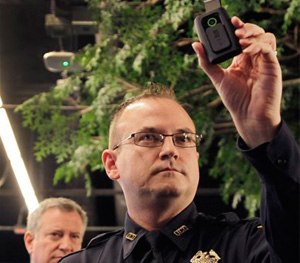
Some projects can be funded on a one-and-done basis - providing agencies with body cameras is not one of them
On December 1, 2014, President Obama announced a new initiative to “strengthen community policing.” Part of it includes funding for local police agencies to purchase body cameras. At first examination, that might seem like a good idea, but it’s likely to fail for the same reason other well-intentioned federal funding programs have fizzled.
Well-Intentioned, Poorly Executed
Between 1998 and 2002, the Clinton administration funded its Community Oriented Police Services-Making Officer Redeployment Effective (COPS-MORE) with the claim that 100,000 more law enforcement officers would be on the street as a result. COPS-MORE never came close to funding 100K new officers, and of the ones it did pay for, some of them lost their jobs when the federal money ran out.
Some projects can be funded on a one-and-done basis. Radar and LIDAR units, tactical helmets, and portable radios have a decent service life, and when they do wear out or become obsolete, there may be budget money for replacements. Most of the president’s law enforcement advisors have no recent, if any, experience in the operation of a typical law enforcement agency. Those with this kind of experience and who have experimented with body cameras know an inconvenient truth (see what I did there?): the cost of the cameras is insignificant compared to the cost of the video storage.
A quality body camera can cost around $1000, once you’ve bought the charging/docking cradles, maybe an extra battery or two, and the hardware necessary to mate the camera to the officer/user’s shirt, shoulder, or head. They’re reasonably sturdy devices, and should be good for a few years.
The gift that keeps on giving here is the video those cameras produce. That video consumes a lot of disk space, and there will be more every day.
Adding it Up
Here’s a calculation based on a 50-officer agency: say 60% of your cops work on a typical day, and each produces an average of four hours of video. If the video is encoded at 640x480 VGA (the format stored by the
TASER AXON
system, one of the more popular models) it’s going to take up 15-20 MB of space per minute (TASER may compress the video better than that— this is just an estimation). That’s just over 1 GB per hour, times four hours, times 30 cops, times three shifts: 360 GB per day, more than a terabyte every three days, ten terabytes per month.
How long do you want to keep that video on file before you delete it? If you say “forever,” get ready to write an increasingly large check each month. If you can live with, say, three months, that’s about 30 terabytes worth of storage, plus whatever you keep around for open cases.
Amazon Web Services (AWS) is one of the largest cloud storage services in the world. Netflix uses them for their trove of streaming video. There are a lot of variables, but the figure I got for keeping this volume of video online with AWS, creating a new volume at the end of each sift, is $6260.79. Apply whatever multiples you might need for more cops or a longer retention interval.
It’s easy to see that the cost of purchasing the body cameras is almost trivial compared to the price tag for maintaining the video archive.
Even though it was another federal project, perhaps they have forgotten The Skylab Principle : If You Can’t Keep It Up, Don’t Do It (this may be lost on millennials, so I included a reference).
The Solution
There is a workable solution here. If the federal government was to provide archiving services for bodycam-generated video, the storage costs for local agencies would disappear. The U.S. Government is also a user of Amazon Web Services, but the feds are not slackers in the data storage department. The newly-constructed Utah Data Center, a facility of the National Security Agency, has an estimated storage capacity of 3 to 12 exabytes (one exabyte = one million terabytes).
The government could reduce the cost of the body cameras even more by contracting directly with one or more manufacturers. A 50-cop police department has a little bargaining power, but the negotiating position improves considerably when the lot order goes to 60,000 units.
All we need now is a cool name for the program, to be coined by ACONGPA, the Agency for the Creation Of Nifty Government Project Acronyms.
Copyright © 2025 PoliceGrantsHelp.com. All rights reserved.
